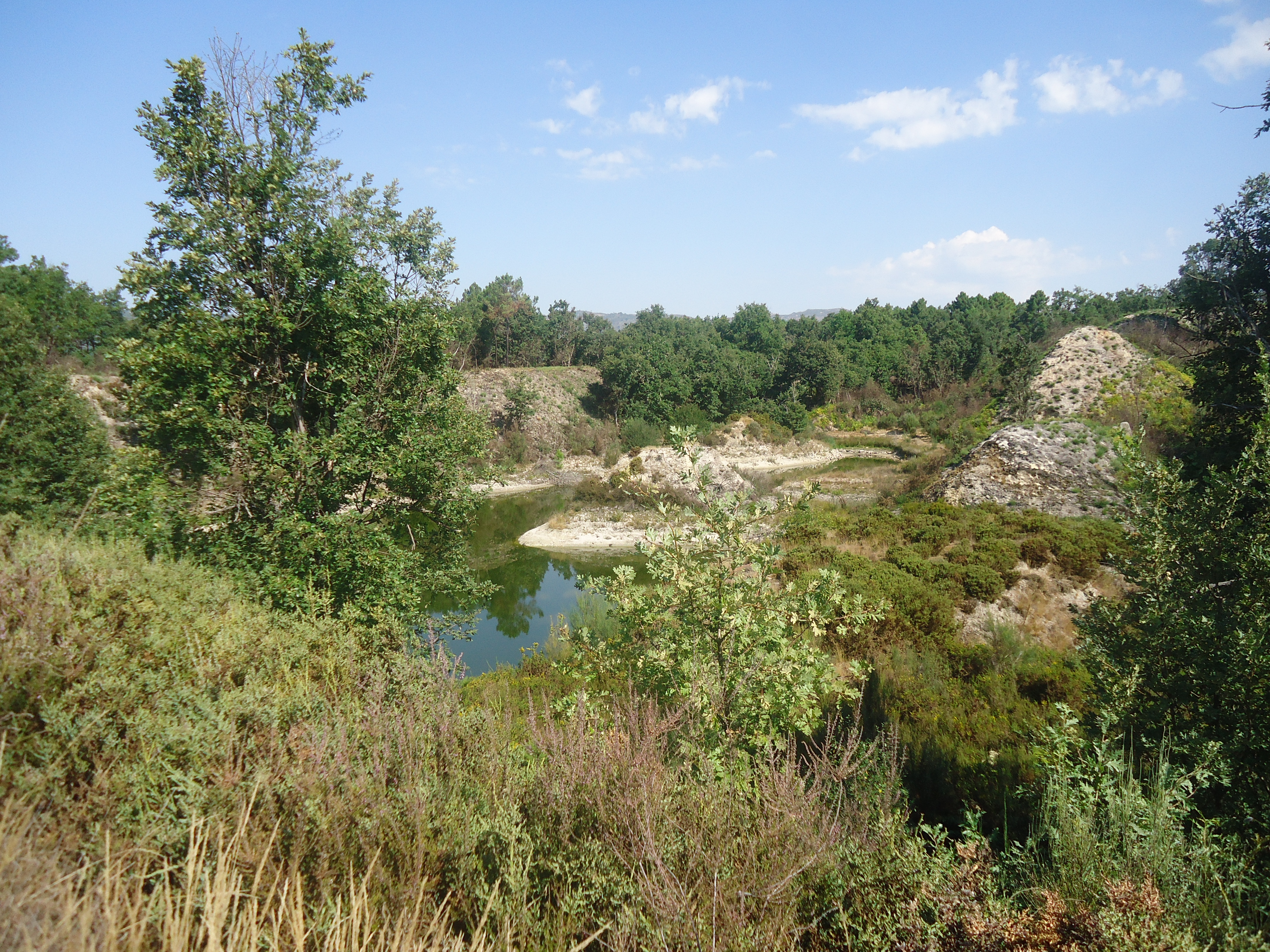Poço das Freitas Mines, Bobadela
Being the name that historically more often appears associated to the Ancient Mining Complex of the upper Valley of the Tervariver, the mining site of Poço das Freitas is located south of Limarinho, embedded between the banks of Calvão and Sangrinheira streams. Characterized by a pond with a small "island" in the centre, the Poço das Freitas is also related to mining extraction in Roman times, constituting one of the artificial water storage basins that would serve the operating complex. The pond is surrounded by large trenches, on whose slopes gallery entries can be observed. The mining gallerieshave stilted archor quasi frustoconicalsections. We can also find in Poço das Freitasvertical shafts, mostly with square sections. On hill outer surroundings are the ancient deposits of aggregates, corresponding to the heaps proceeding from mining wastes. The Poço das Freitas, as Limarinho (both primary gold deposits) was exploited, extensively, in the Roman era, between the mid-1st century and the 4th century. Theminners focused on the quartzdeposits comprised in the granite, which were dismantled in open pit, giving rise to the trenches and cuts still visible today, torn preferably in N-S direction. In the southern area of the complex, at the site called Carregal, evidence show what may constitute the remaining vestiges of a Roman mining settlement. Poço das Freitas is currently a very important ecological niche, where inhabit a large number of specimens of European Pond Turtle, amongst floristic and faunal species of high value for the study and conservation of the national biodiversity status. The Poço das Freitas Mines integrate the classified defined by the Portuguese Government as Public Interest Site, promulgated by ministerial order No. 386/2013 (DR, 2nd Series, no. 115 of June 18, 2013), due to its uniqueness and as a fundamental part of the Ancient Mining Complex of the upper Valley of the Terva river, in Boticas.
CHARACTERISTICS
City: Bobadela
Postal Code: 5460 - 210
Telephone: 276410200
Email: pavt@cm-boticas.pt
Website: http://www.cm-boticas.pt
Specific Conditions:
-
Method:
Transporte próprio
Difficulty Level:
Média
Group Visits:
Yes
Minimum Number of Person per group:
2
Maximum Number of Person per group:
60
Observations:
-
Guided Tours:
Yes
Observations:
You must be requested previously
Pedestrian route
http://www.min-saude.pt/portal/servicos/prestadoresV2/?providerid=313
Where to Stay
http://www.cm-boticas.pt
Where to Eat
http://www.cm-boticas.pt
Táxi
Agency Name:
Luis Alexandre Pereira Lopes
Telephone Number:
963042345
Parking for private vehicles:
No
The Roman Route of Gold in the North of Portugal is a proposal for a mining and geological tourism route dedicated to the exploration of the mineral resources of gold in the North of Portugal, a region that in Roman times constituted one of the main areas of gold mining of the Roman Empire.
Recently requalified, the Tresminas Interpretive Centre is an added value to understanding the dynamics of the Tresminas Roman Mining Complex. It has two buildings, geared to the interpretation of historical and archaeological heritage and ...
Considered to be one of the largest mining exploitation sites of the Roman world, mining at Tresminas began during the reign of Augusto (27 BCE - 14CE), and lasted through the time of the Seventh Severo. The activity was conducted through t ...
The Municipal Museum provides a tour of the County history, captured in five distinct historical environments, from prehistoric times to the twentieth century. The room dedicated to "Roman Gold" displays materials from the Tresminas and Jal ...


